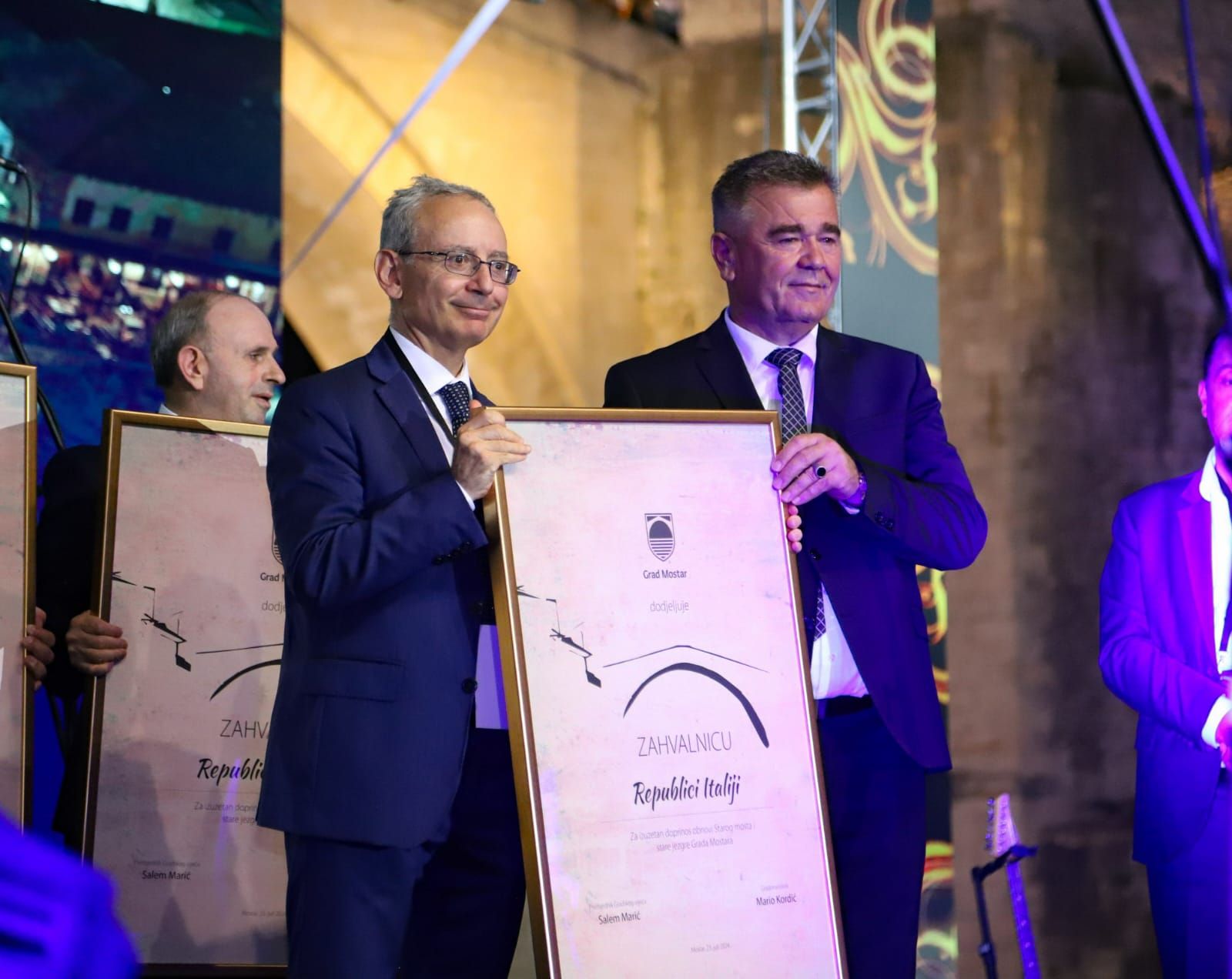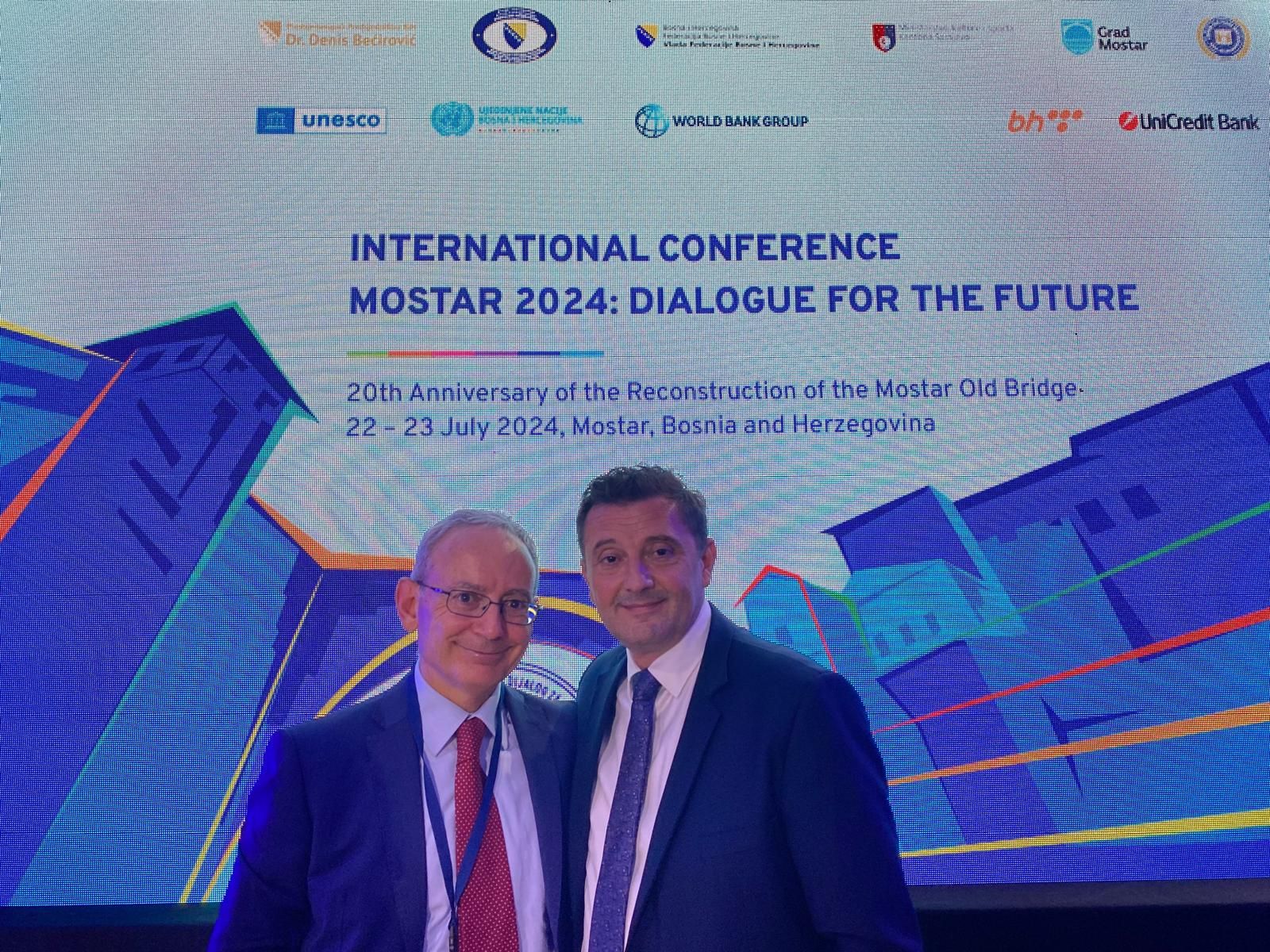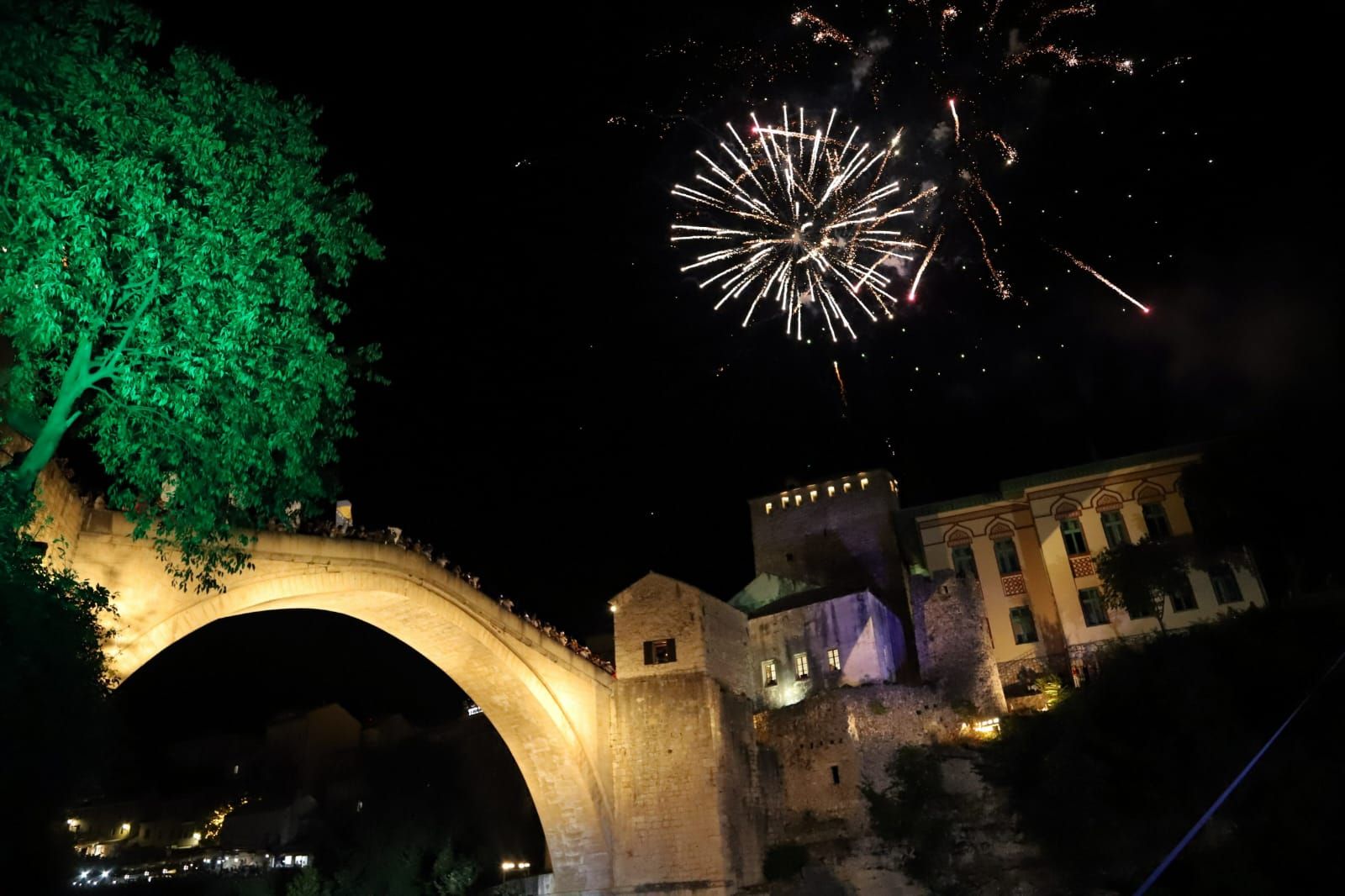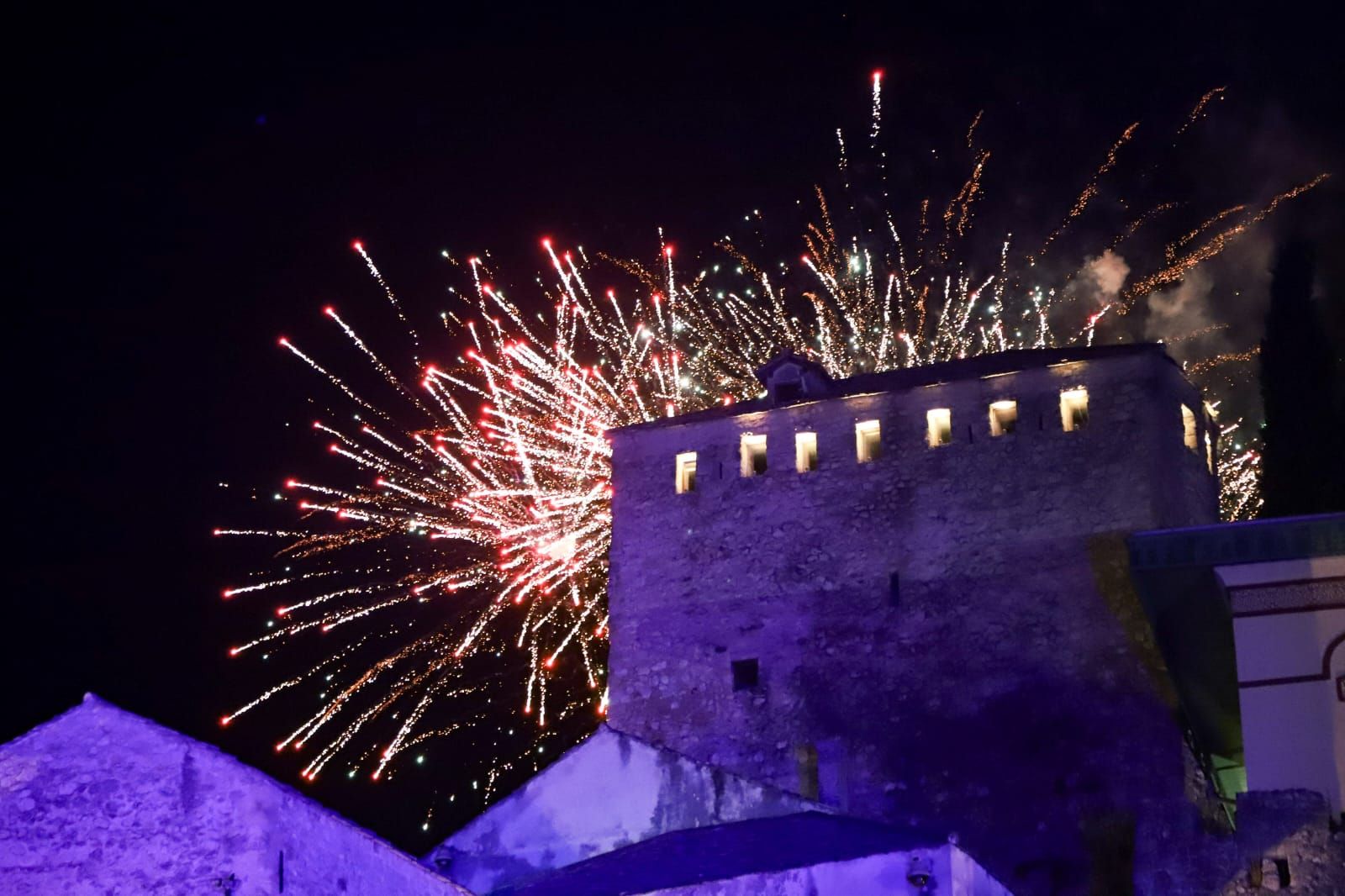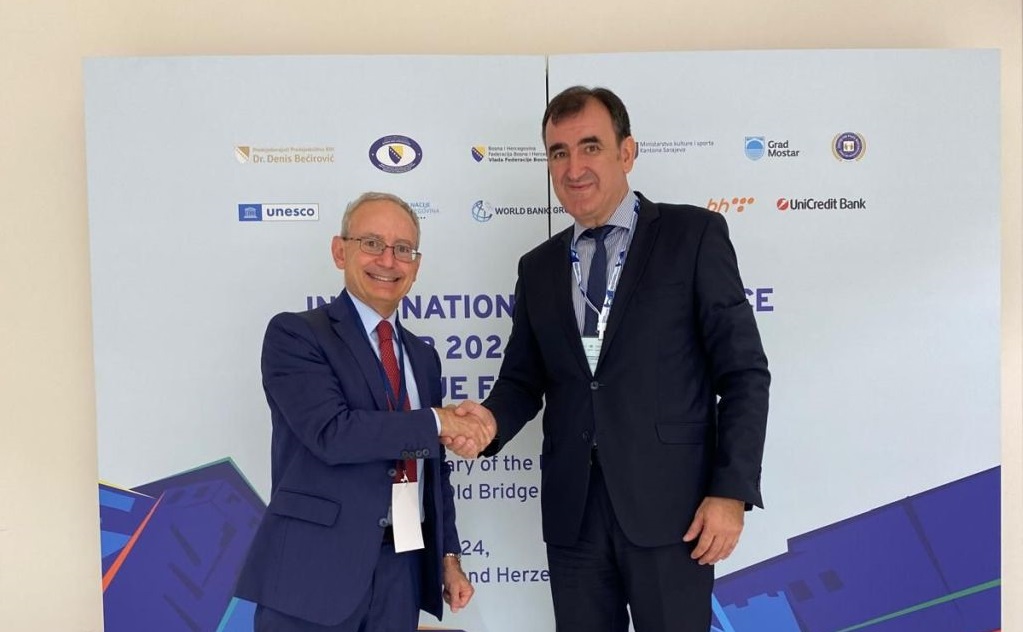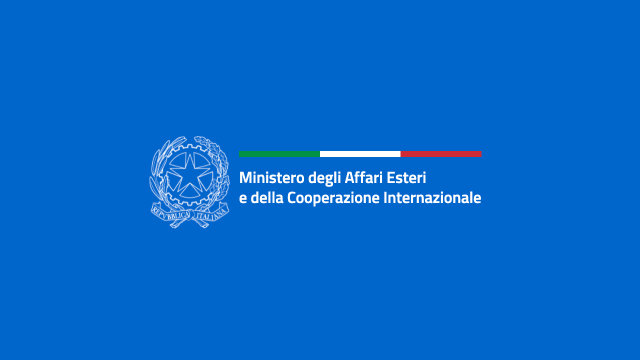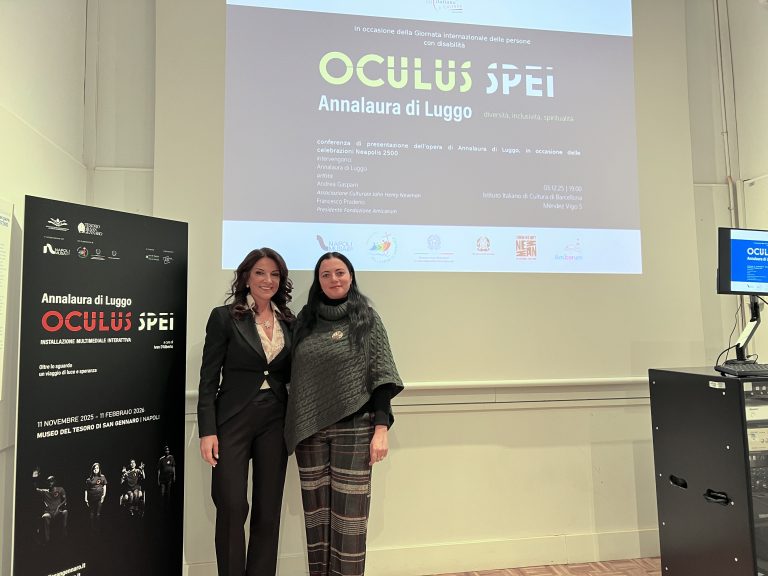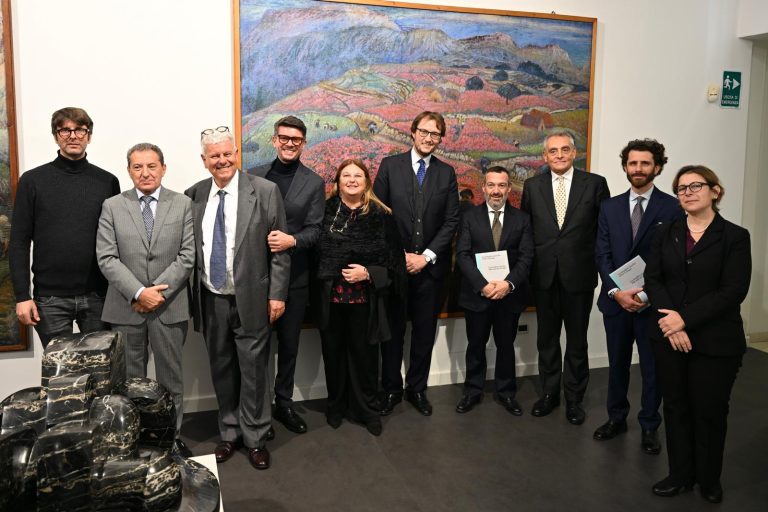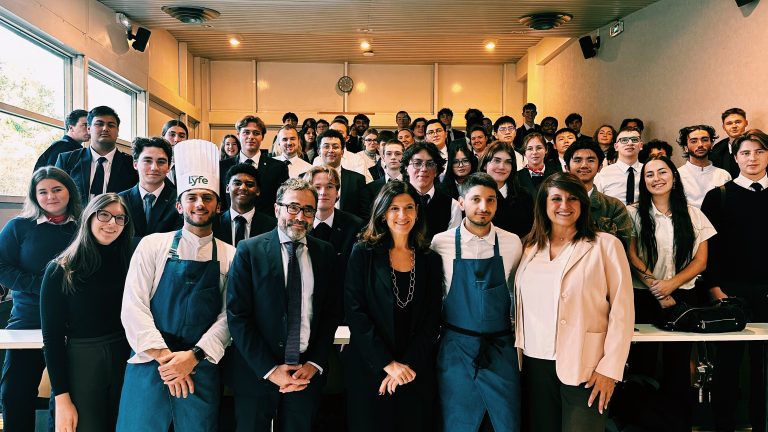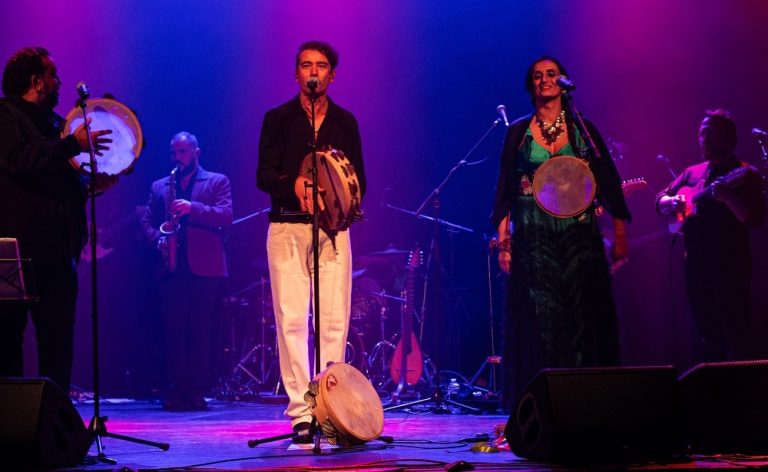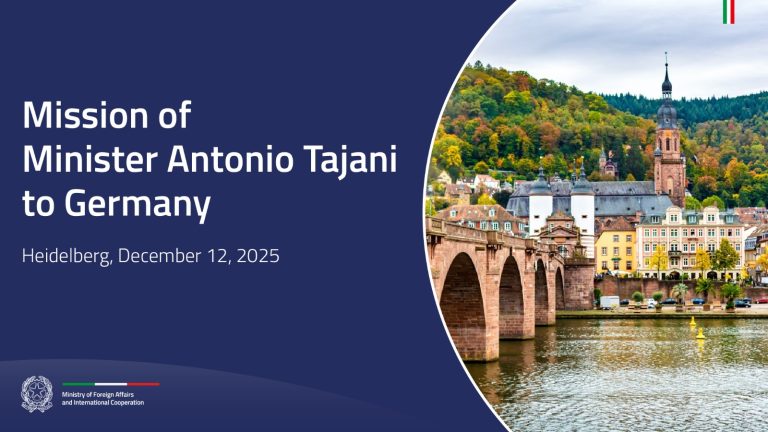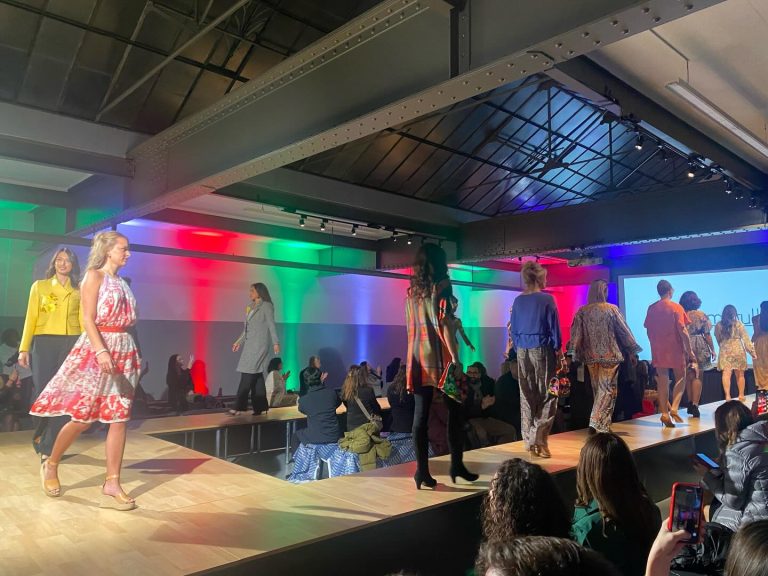The Italian Ambassador in Sarajevo, Marco Di Ruzza, participated in the commemorations organised by the Bosnian-Herzegovinian authorities in partnership with UNESCO to celebrate the 20th anniversary of the reopening of the Old Bridge (Stari Most) in Mostar, which took place on 23 July 2004.
Italy was invited to the event as a guest of honour, having distinguished itself as the first donor country in the international solidarity effort that made the reconstruction of the bridge possible and its subsequent inclusion in the UNESCO World Heritage List.
On the evening of 23 July, at a stage set up at the foot of the bridge with images of the reconstruction as a backdrop, the Mayor of Mostar, Mario Kordić, and the President of the City Council, Salem Marić—Croat-Bosnian and Bosniak-Muslim respectively—presented an award to the representatives of the international actors who significantly contributed to the reconstruction of the Old Bridge, including, of course, Italy.
“The decisive Italian contribution to the reconstruction of the Stari Most,” stated Ambassador Di Ruzza, “is a clear testament to our commitment to supporting interethnic peace and stability in Bosnia and Herzegovina. The rebuilt bridge undoubtedly stands as one of the most significant symbols of a reconciliation process that, although tortuous and incomplete, has allowed the Balkan country—with Italian support—to achieve EU candidate status and make tangible progress towards initiating related negotiations.”
Built in 1557, a jewel of medieval Ottoman architecture, the Old Bridge has always been the most iconic and evocative symbol of Mostar, representing the coexistence between the Christian West and the Islamic East. Its destruction provided one of the most dramatic and heartbreaking images of the war that ravaged Bosnia and Herzegovina during the disintegration of the former Yugoslavia. The structure was bombarded on 9 November 1993, during the “conflict within the conflict” that pitted Croat-Bosnian forces against Bosniak-Muslim forces in Mostar.
The celebrations spanned two days, featuring a wide range of events attended by top state officials, including the current President Denis Bećirović, the Chairwoman of the Council of Ministers Borjana Krišto, and the Minister of Foreign Affairs Elmedin Konaković. Also present were local authorities, the international community, including former President of Slovenia Borut Pahor, Croatian Foreign Minister Gordan Grlić Radman, Turkish Deputy Foreign Minister Burhanettin Duran, UNESCO Deputy Director-General Qu Xing, and the Vice President of the Europe and Central Asia Region at the World Bank, Italian Antonella Bassani. Various NGOs, including the “Center for Peace and Multi-Ethnic Cooperation” of Mostar, directed by former Mayor of Mostar Safet Orucević, also participated in the celebrations.

